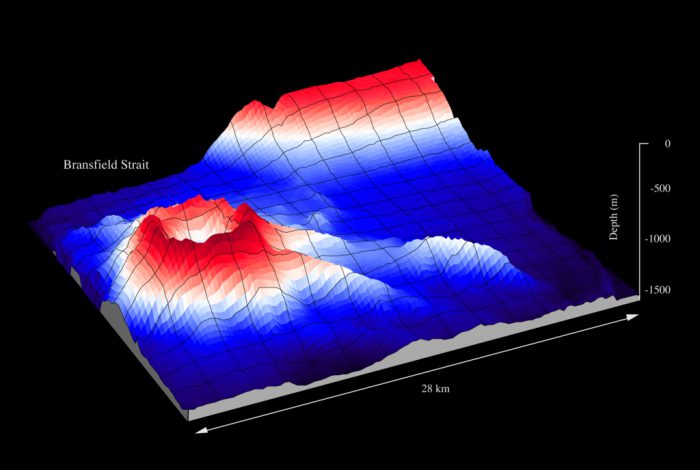In 2020, a series of unusual seismic activity shook up Antarctica.
In other words: Earthquakes!
An earthquake is when tectonic plates—enormous, continent-sized slabs of the Earth's crust—shift and scrape against each other. Though these plates are always in motion, that motion is usually so slow and subtle that we don't notice it. But scientists definitely noticed this motion.
Between August and November 2020, scientists recorded 85,000 earthquakes. Yes, 85,000!
Clearly these earthquakes were not major ones. But this many tremors at once meant that something out of the ordinary was going on down there. And now, after plenty of study, scientists believe they have found the culprit.
An underwater volcano!
Enter the magma
Off the shore of King George Island. The tremors started somewhere underneath this water! (Getty Embed)
We tend to think of volcanoes as being these enormous explosive mountains. Which they certainly can be!
But at its most basic, a volcano is an opening in the crust where magma (molten rock) from deep inside the Earth leaks to the surface. (once that magma reaches the surface, it becomes lava.) As the magma pushes up to the surface, it can be very powerful and disruptive, even if it doesn't result in an explosion.
This is what scientists think happened in a previously dormant underwater volcano called Orca Seamount. This volcano is off the coast of King George Island, which is at the tip of the Antarctic Peninsula. Quick-moving magma set off a series of tremors in the ground, resulting in months of earthquakes.
Putting it together

A map of King George Island. (Wikimedia Commons)
Because King George Island is quite remote, researchers needed to use a variety of instruments—some near the island, others much further away—to piece together what happened. Among the tens of thousands of small earthquakes, there were two big ones. A 5.9 scale in October and a 6.0 in November. (Earthquakes are measured on something called the Richter scale, which calculates its strength.)
The large November quake seemed to settle things, mostly ending the largest swarm of seismic activity ever recorded in Antarctica. In the end, the ground on the island was moved by about 11 cm (over 4 inches). That's pretty significant when you're talking about something the size of an island, and something that normally would take place over thousands of years, not three months!
Will Orca Seamount come back to life again? At some point, probably, though who really knows when? This is the thing about tectonic plates and volcanoes. They operate on timescales of millions of years. Which makes getting a chance to see this flurry all the more remarkable and rare.
 An underwater sonar image of Orca Seamount, the site of the volcano. (Wikimedia Commons)
An underwater sonar image of Orca Seamount, the site of the volcano. (Wikimedia Commons)









